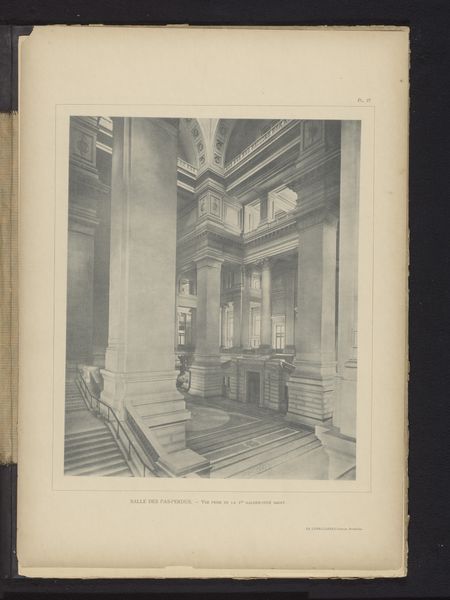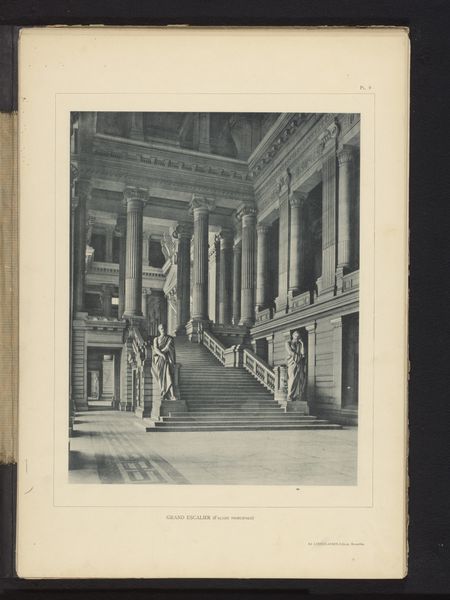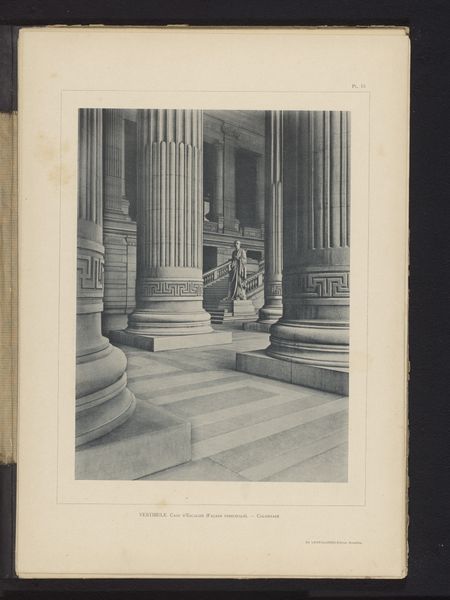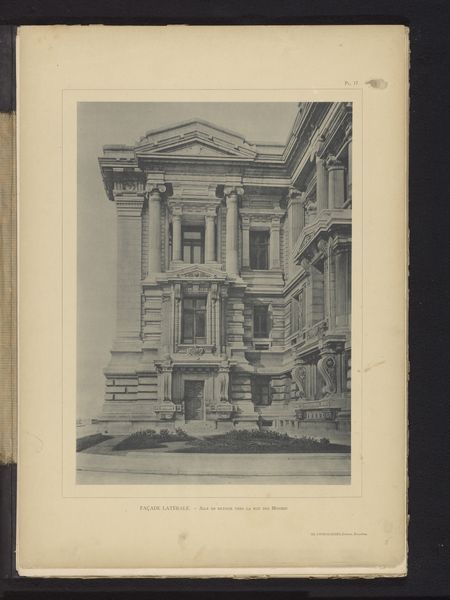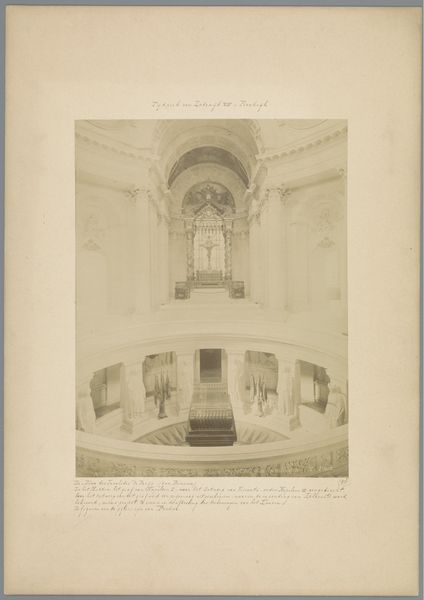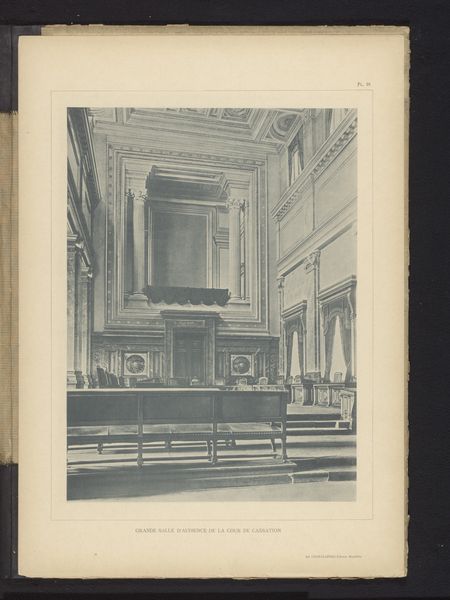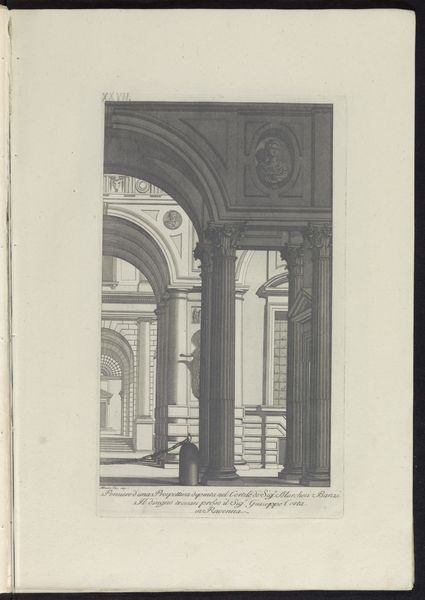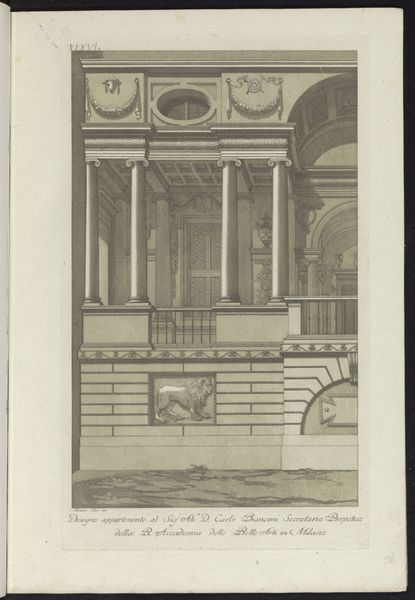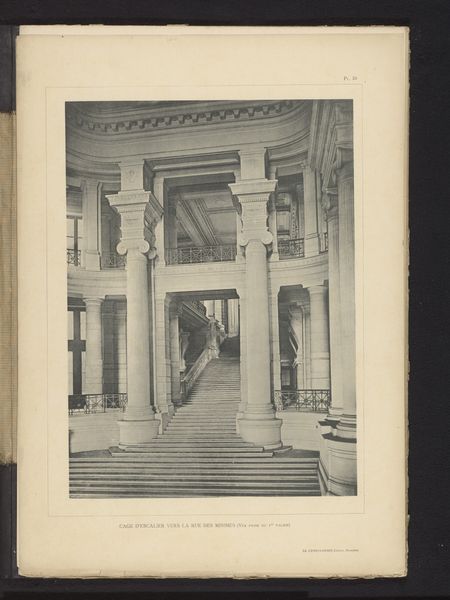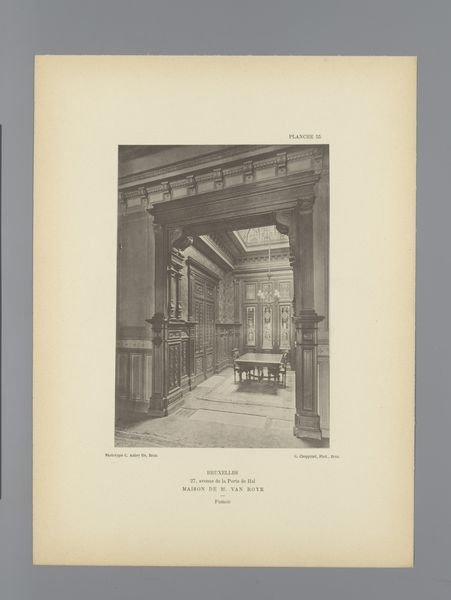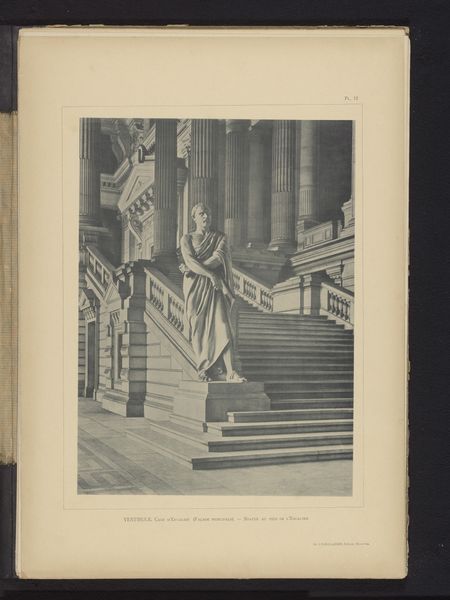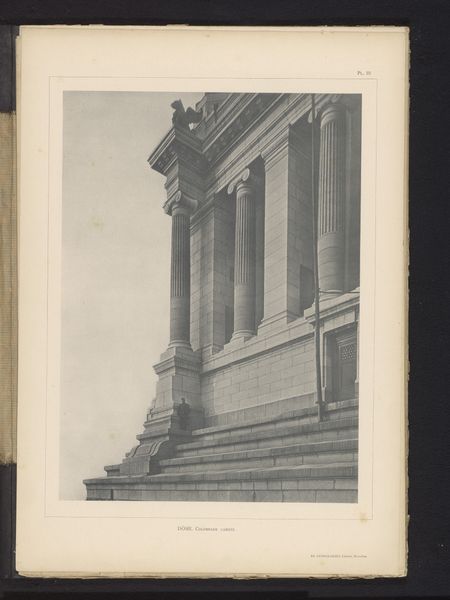
Gezicht op de trap aan de westzijde van het Paleis van Justitie in Brussel, België before 1894
0:00
0:00
print, photography, architecture
#
neoclassicism
# print
#
photography
#
cityscape
#
academic-art
#
architecture
Dimensions: height 323 mm, width 240 mm
Copyright: Rijks Museum: Open Domain
Editor: So, here we have an image – a photograph or print of the west side stairs of the Palace of Justice in Brussels, captured sometime before 1894. It feels very…monumental, and imposing, even in this two-dimensional form. What do you see in this piece, considering it’s not just a building but also an image meant to represent something? Curator: I see the weight of legacy and power, rendered in stone and light. The image itself, particularly as a photograph or print circulating before 1894, functions as an icon. Neoclassical architecture, with its columns and grand scale, is never merely functional. It speaks of empires, of justice as an immutable force. Do you feel a certain timelessness emanating from this depiction? Editor: Absolutely, it's like a vision of permanence. But doesn't that inherent claim to permanence clash with the fact it's a transient image, reproducible and circulating? Curator: That tension is precisely where the symbolism resides. The creators use new, reproducible technologies – photography and printing – to portray an idea of unwavering, almost divine, authority. Look at how the steps themselves guide the eye upwards. In what other ways does this image reinforce its message through visual cues? Editor: I guess the starkness of the monochrome also adds to that severity and monumental feel… almost like ancient ruins, reinforcing ideas of history and enduring power. The perspective, looking up, makes the building even more imposing, like it is towering above the viewer. Curator: Precisely. Even the very act of ascending stairs has a long-standing metaphorical weight, representing progress and access to higher knowledge or authority. It suggests who is included, and perhaps, more importantly, who is excluded from the halls of power. Do you think it invites you in? Editor: I do appreciate seeing how architecture and imagery combine to send a particular message of stability and grandeur! It does make you think about power, who holds it and how they display it through both buildings and reproducible images. Curator: Indeed! Understanding these visual cues helps us decode the deeper meanings embedded in even seemingly straightforward images.
Comments
No comments
Be the first to comment and join the conversation on the ultimate creative platform.
